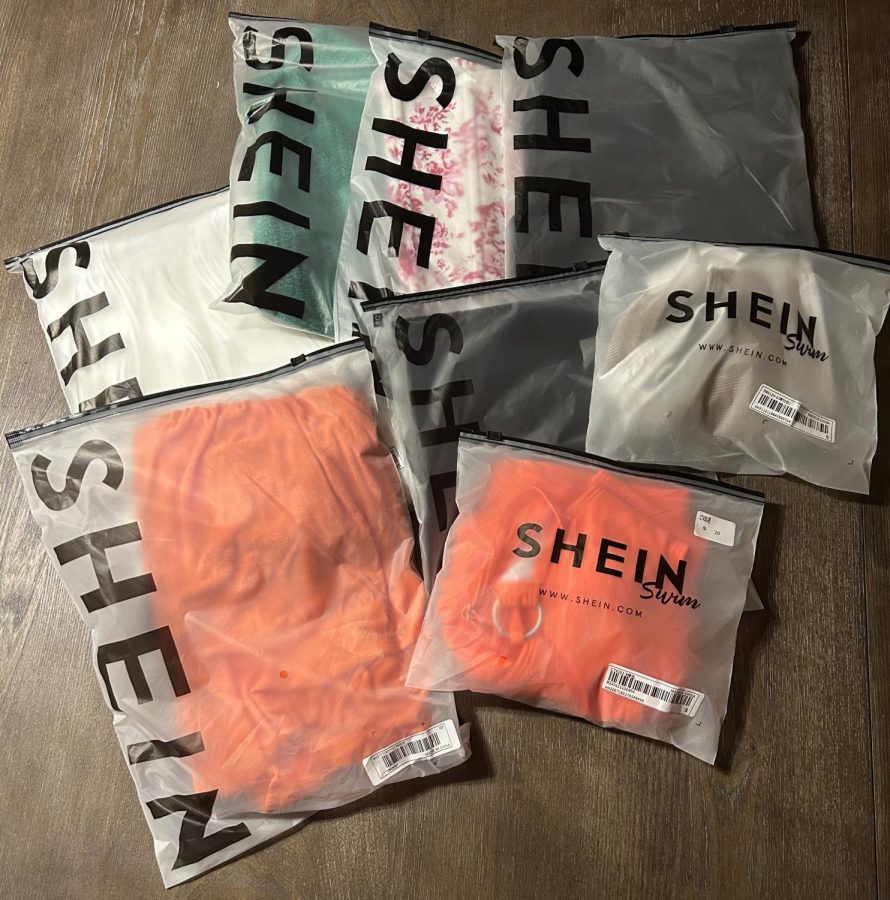Fast fashion clothing brands like Shein and Zara are extremely popular for their affordable prices and trendy clothing. Even with the popularity of these sites, the history behind fast fashion is not well known.
Through the exploitation of labor workers in developing countries, clothing is rapidly produced. Many companies that practice fast fashion house poor working conditions and a lack of proper monetary compensation for their workers.
Despite the rising disapproval of fast fashion, the industry continues to grow at a rapid rate. It is projected that the market will grow at a rate of 19% in the near future, starting from $68,634 million in 2020 and reaching $163,468 million by 2025.
Teenage girls are a main contributor to the rise of these sites. Many girls at PV, including senior Grace Tomlinson, have shopped from Shein recently in preparation for spring break. “I shop here because they are cheap and trendy clothes that I can get to have fun looks that I love for my vacation,” shared Tomlinson.
The history of fast fashion traces back to the Industrial Revolution. With the invention of the sewing machine, clothes were able to be made at a much faster rate and in turn were sold much cheaper due to the decrease in input of time and labor it took to make them. This led to a shift in the purpose of clothing in the 1960s; an increased interest in design emerged, decreasing the consideration of functionality.
Prior to the Industrial Revolution, garments were made at home. Due to the rising demand for clothing, the production process needed to evolve.This led to the opening of textile mills in the US and Europe.
Factories implemented new mechanized methods to meet the demand for clothes. This change led to faster production because the textile mills increased availability of workers. Clothing factories began to spread globally, including in countries like Bangladesh and China. Bangladesh is now one of the leading countries in the production of clothing, with its workers earning an average salary of the equivalent of $3,304.56 per year. Because of the extremely low wages in these countries, clothes are able to be produced and sold at lower costs than ever before.
The New York Times was the first to use the term “fast fashion” in the 1990’s when Zara adopted a new and faster model of producing clothing. Their clothes were being taken from the design stage to stores faster than ever before. Zara’s mission at the time was to have clothes in stores just 15 days after being in the design stage.
Even while many are aware of the process that goes into making these clothes, they continue to shop from these brands. Tomlinson still chooses to buy from these companies despite the reputation. “Many of the brands I shop from are using bad practices when producing clothing. Shein at least sells their clothes for cheaper than other places like Nike or Zara,” shared Tomlinson.
There are many people who choose to buy their clothes in more ethical ways, such as shopping in thrift stores. Senior, Katy Babcock, is someone who enjoys thrifting. “I like thrift shopping because it is more environmentally friendly and I can reuse clothes that have already been made rather than buying products that have to go through the whole production process again,” said Babcock.
Fast fashion brands are now some of the most common ways for people to shop, but with increased awareness, many are choosing to spend their money on more ethical options such as thrifting or reselling their clothes online. Choosing these options would allow for less money to go towards these fast fashion brands and make a positive change in the clothing industry.









